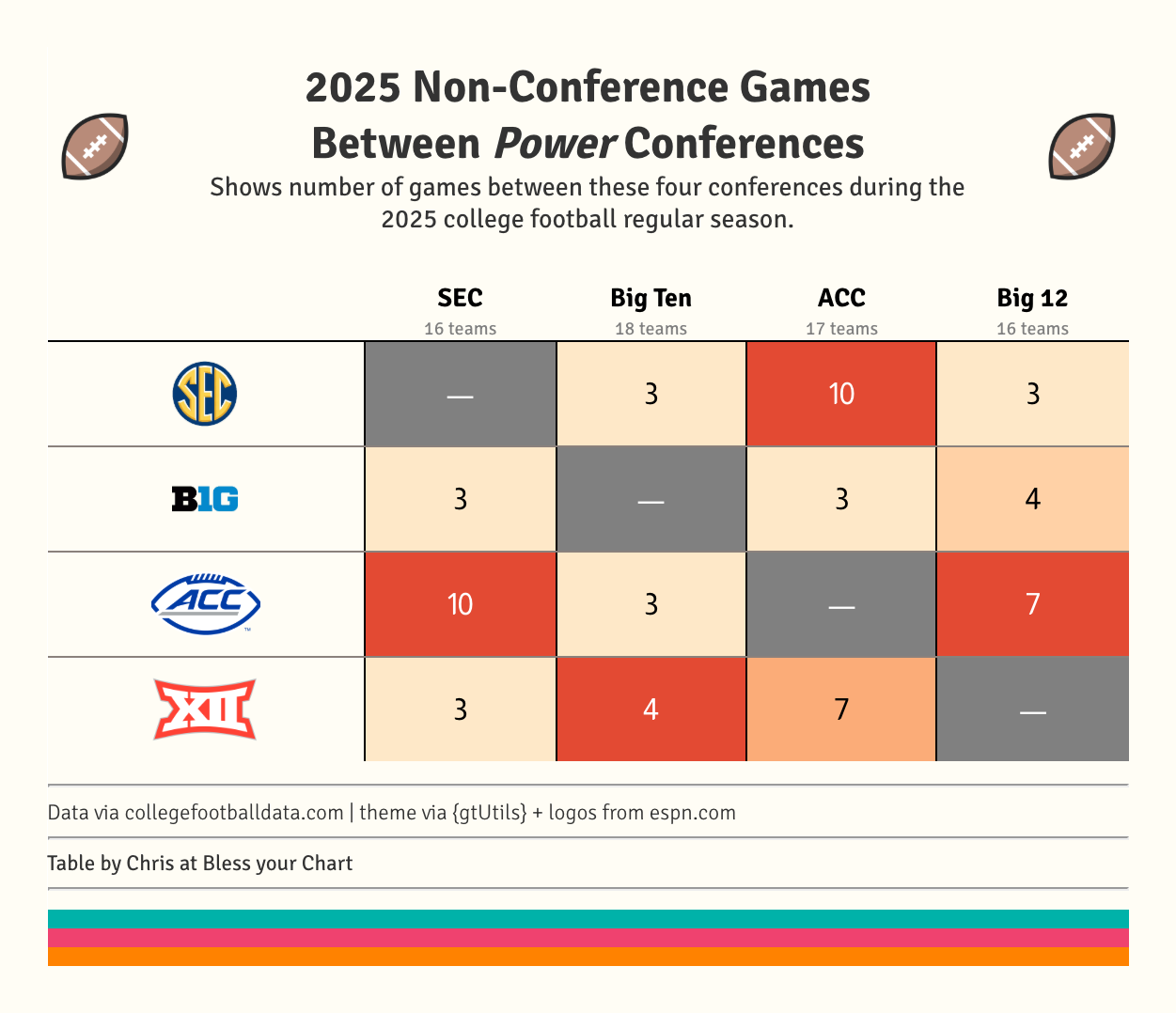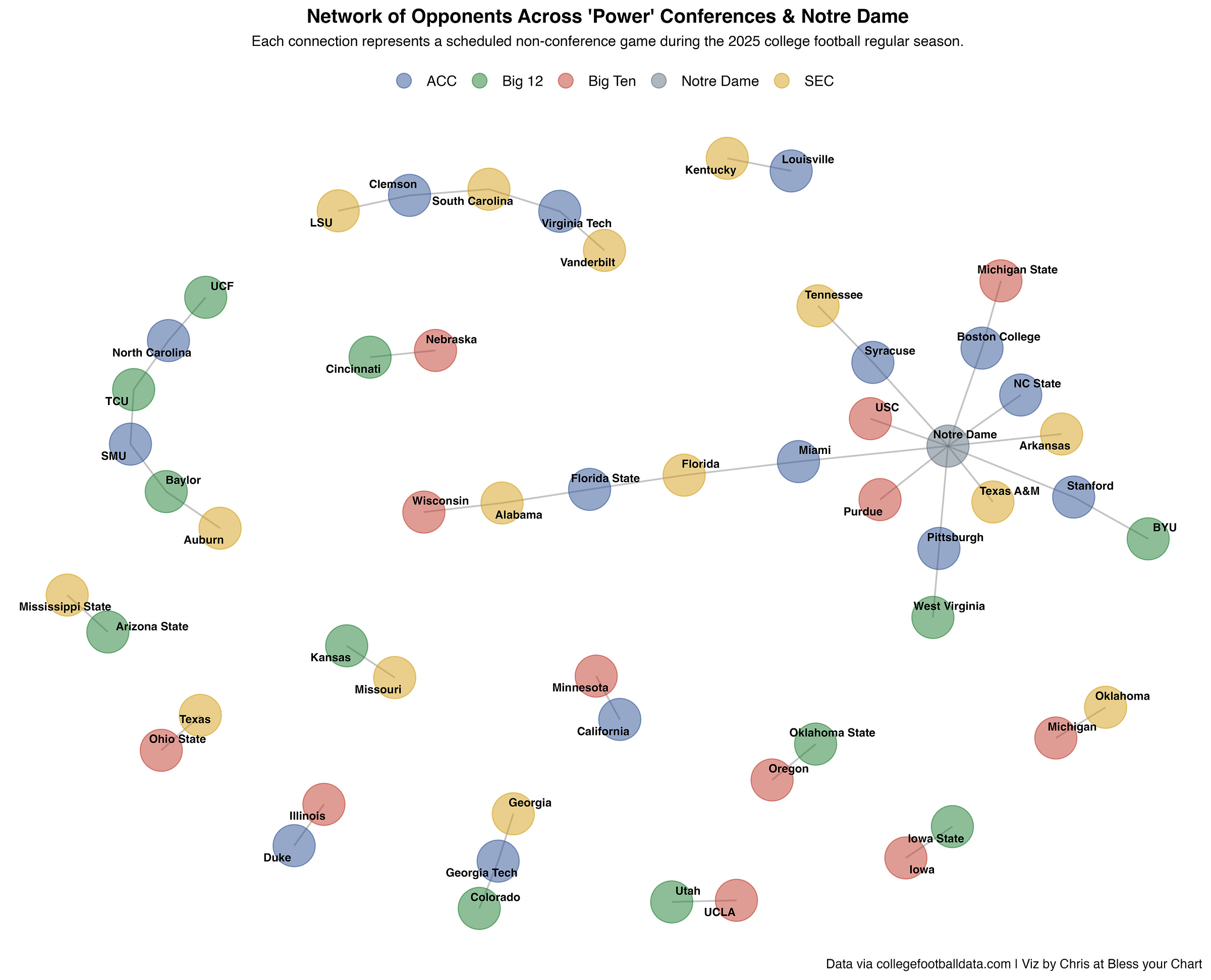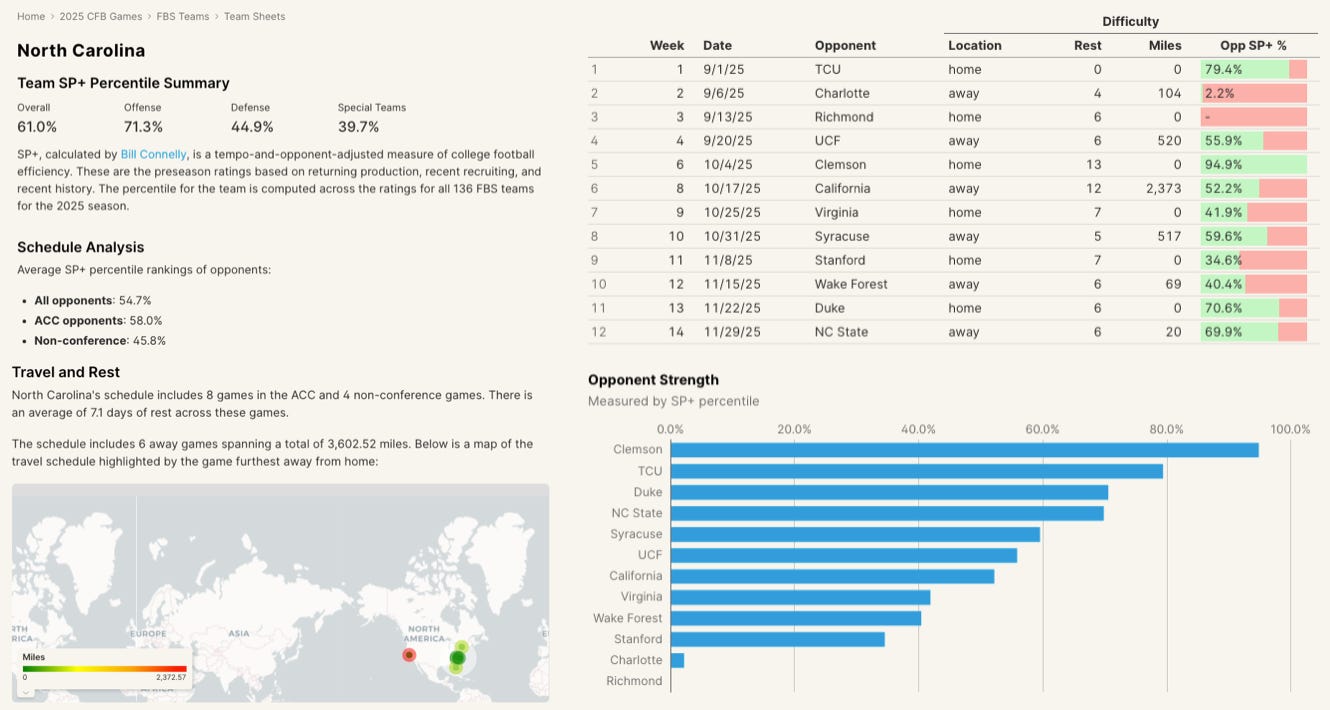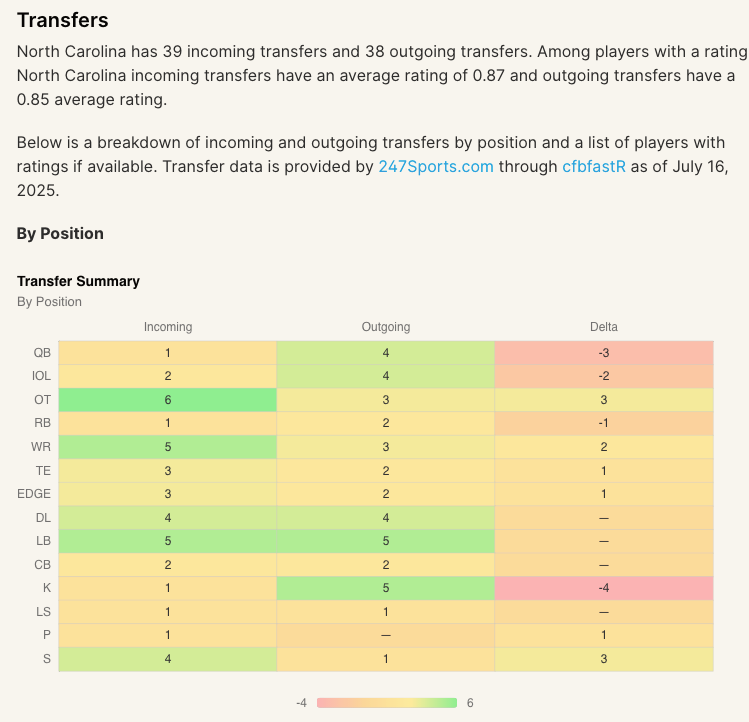The 2025 college football season begins in less than 40 days. It’s time for conference media days and previews.
And everyone is playing the schedule game or trying to guess how a team will finish based on its schedule.
The future of the playoff format remains up for debate. Missouri’s coach is pitching a 30-team playoff format. The commissioner from that same league aired a disagreement with the Big Ten about the future of the playoff.
The Big Ten prefers a model that provides guaranteed spots to specific conferences and the SEC counters with a 16-team format that includes the five highest-ranked conference champions and 11 at-large bids.
How you determine those rankings is a separate debate, but here's what's fascinating: all this talk about strength of schedule and conference superiority happens while these power conferences barely play each other in the regular season.
Last regular season, there were four such games between the Big Ten and SEC. This season that number is down to three and all those games occur before September 14.
If you add in the ACC and Big 12 as the other power leagues, here is how often teams from these leagues play each other this regular season.
Given the Big Ten has moved to a nine game conference schedule and the rest of the power leagues play eight conference games, these four power conferences have a combined 250 non-conference games available each season.
Only 60 of these games (24 percent) are actually used to play one another.
SEC: 25 percent of non-conference slate against other power conferences
Big Ten: 18.5 percent (lowest)
ACC: 29.4 percent (highest)
Big 12: 21.9 percent
Despite all the talk about guaranteed spots and tough schedules, teams from these power conferences often use the non-conference to play lesser opponents from smaller leagues.
Of course, teams outside of these four leagues are still competitive too. Remember Notre Dame, part-time ACC member and lifelong independent, played for the National Title last season.
If we include the Irish, let’s try to map out a network of common opponents across these four leagues and Notre Dame.
As you can see, there are few red (Big Ten) and yellow (SEC) connections. The 17 teams from the ACC create quite a web of common opponents1, while Notre Dame is the key cog to connect several teams.
What's more telling is which teams are completely isolated from this network2.
A consequence of the Big Ten playing nine conference games means a third of its teams, including Indiana and Penn State, don't play a single power conference opponent outside their league.
The Nittany Lions face Nevada (Mountain West), FIU (Conference USA), and Villanova (FCS) in their three game non-conference slate.
Who a team plays is a huge part of the schedule game, but it might be equally or more important when and where the games take place.
This is why I built a tool to surface schedule data from collegefootballdata.com. Beyond just who teams play, it tracks when and where games happen.
For instance, West Virginia travels over 1,600 miles to play BYU on just five days' rest in early October.
You can find a list of 2025 college football games here:
This surfaces every game this regular season between FBS teams, including:
opponent's SP+ rating normalized to percentiles (higher is better opponent)
the days rest between games
miles traveled for away or neutral site games.
You can search the table or filter by team, the team's conference, or the opponent conference.
Plus, you can find a summary for all 136 FBS teams this regular season. For example, here is what you can find for an individual team like North Carolina:
The same team summary surfaces transfer portal data too. You can see a delta of incoming and outgoing players by position using data and ratings from 247Sports.com.
If you have any ideas on data to add or other data to surface, please let me know in the comments.
Random recommendations
A ton of the data for the app is from collegefootballdata.com, an incredible resource from Bill Radjewski.
SP+ ratings from Bill Connelly are what I’m using to measure a lot of team strength. Connelly’s preseason ratings incorporate returning production, recent recruiting, and recent history. Bill has a new book, Forward Progress: The Definitive Guide to the Future of College Football, coming out in September. You can pre-order it here.
Joel Embiid sees you by Dotun Akintoye at espn.com. This is one of the best examples of revealing humanity in writing that I’ve ever read. It’s a complicated, sad, and fascinating feature story.
My last recommendation is more of a reminder for myself to lay off the social media. My last post, published about a month ago, was about NBA first round picks comparing Duke and North Carolina.
The idea was to show how trends and perceptions of the two programs have changed over the past 15 years. After sharing it on Twitter, it got quote tweeted by one national writer, and then another, and then another.
A few days later it was editorialized as UNC not have a top-five draft pick in 20 years and not having an NBA All-Star since Vince Carter. Never mind if the latter of those statements is not even true.
A good reminder how “news” gets created aggregated these days.
Of course, that’s part of the rub of this newsletter3. The “bless your chart” is a play on “bless your heart”, so I'm aiming to see how people can draw completely different conclusions from another person after looking at a chart.
But it’s a good example of how perception and reality are two different things, which brings us to the F test.
Count the number of f’s in the sentence below:
FINISHED FILES ARE THE RESULT OF YEARS OF SCIENTIFIC STUDY COMBINED WITH THE EXPERIENCE OF MANY YEARS.
Did you find all six f’s in the sentence?
Don’t be surprised if you didn’t count all six, most people only count three, including myself on the first try.
Now read the sentence backwards and see if you count them all:
DEHSINIF SELIF ERA EHT TLUSER FO SRAEY FO CIFITNEICS YDUTS DENIBMOC HTIW EHT ECNEIREPXE FO YNAM SRAEY.
People often fail to count the f’s in “of” given how it’s phonetically “ov” and doesn’t make the “f” sound.
Anyhow, the F test is from the book, The Tao Jones of Averages, another recommendation if you want something short and interesting to read.
🤟 Thanks for reading this far, and hope you’re enjoying the summer. 🤟
Wisconsin plays Alabama and Alabama plays Florida State and Florida State plays Florida and Florida plays Miami and Miami plays Notre Dame.
And Notre Dame plays . . . well, the Irish play 10 games against teams from these four power leagues (6 against the ACC, 2 against the Big Ten, 2 against the SEC), but none against the Big 12.
Notre Dame’s remaining schedule is against Boise State (Mountain West) and Navy (American).
Here are the teams from each power conference that don’t play a team from another power conference:
6: Big Ten (Indiana, Maryland, Northwestern, Penn State, Rutgers, Washington)
4: Big 12 (Arizona, Houston, Kansas State, Texas Tech)
2: ACC (Virginia and Wake Forest)
1: SEC (Ole Miss)
The other part is to make it useful or entertaining, because it’s damn near impossible to both.







